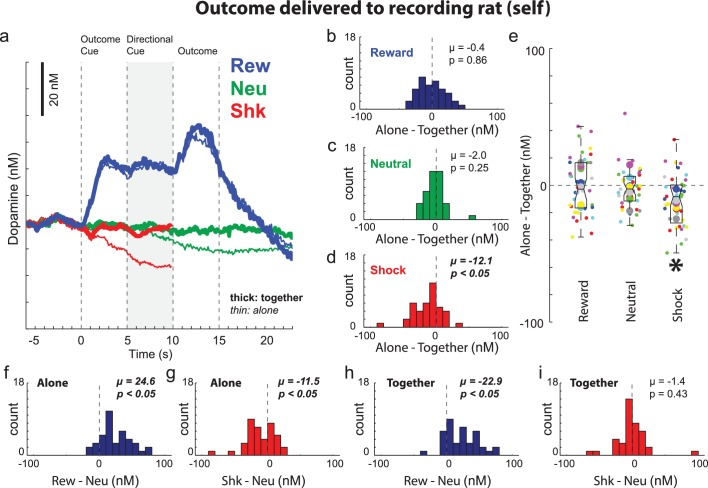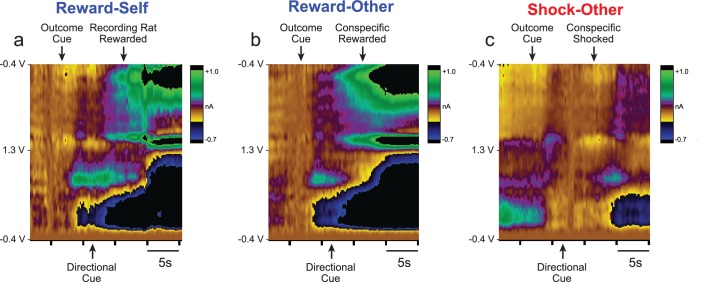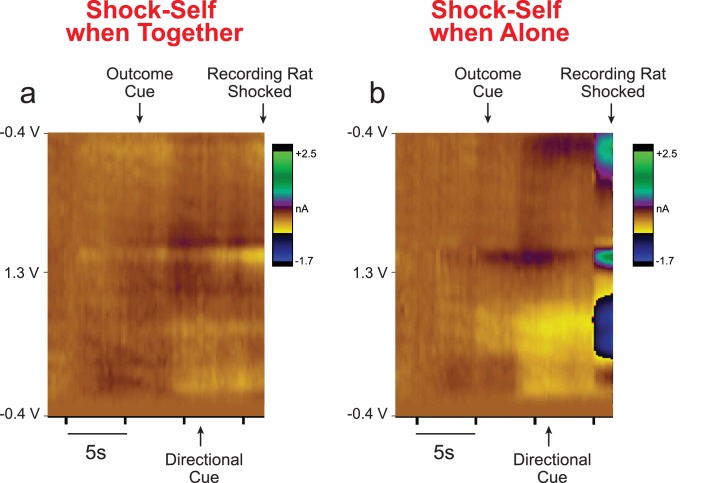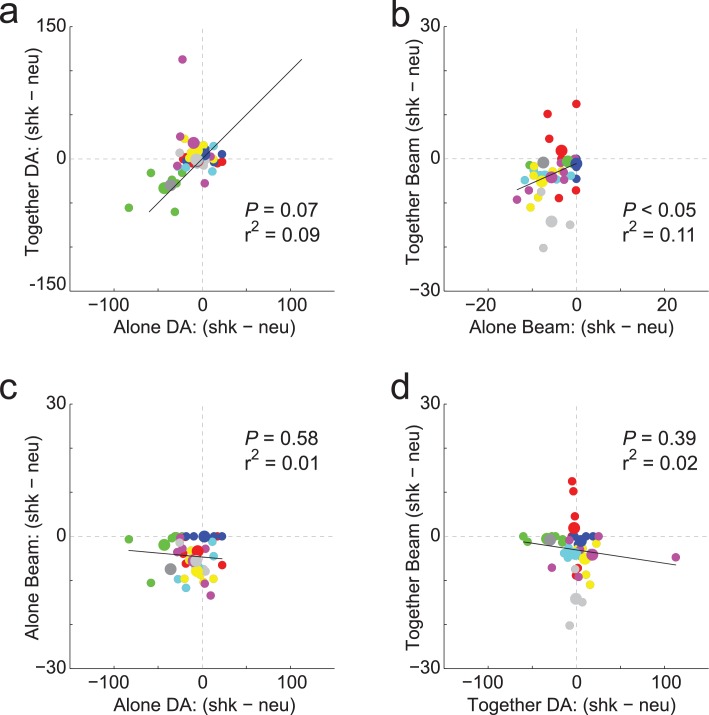Figure 4. Dopamine release when the outcome was delivered to the recording rat (i.e., self).
(A) Average DA release over trial time (n = 40 sessions, 8 rats). See Figure 4—figure supplements 1 and 2 for example sessions. Shock trials (red) are truncated due to shock artifact. (B–D) During the directional cue epoch (i.e., 5 s after directional cue) of each session indices were computed by subtracting average DA release during ‘together’ trials from ‘alone’ trials (Alone minus Together) for reward (blue; B), neutral (green; C), and shock (red; D) during ‘self’ trials. (E) Distributions of the same indices as in B-D (Alone – Together for reward, neutral and shock trials) shown by session (small dots) and rat (large dots) color coded by rat identity. See Figure 4—figure supplement 3 for regressions between behavior and DA release by session and rat. (F–I) Reward (reward – neutral) and shock (shock – neutral) indices taken during the directional cue epoch when rats were alone (F and G) or together (H and I). Distributions of indices were deemed significantly shifted from zero via Wilcoxon (insets provide mean (µ) and p value).




